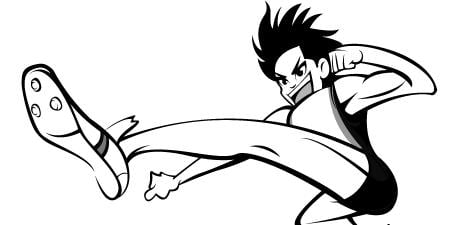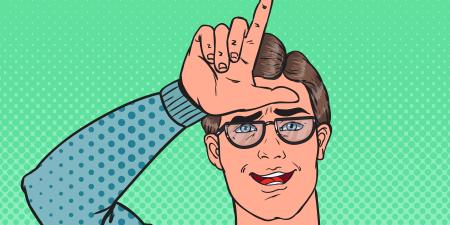Mistreatment remains a challenging problem for US medical schools [1]. The toxic effects of mistreatment on medical students are well documented—demoralization, a loss of empathy, impact on specialty choice, and stress, including symptoms of posttraumatic stress [2-5]. More than 10 years after the Liaison Committee for Medical Education (LCME) added a standard on mistreatment to medical school accreditation standards, responses to the Association of American Medical Colleges Graduation Questionnaire (GQ) continue to show that significant numbers of medical students experience some type of mistreatment. In the 2013 GQ, 42 percent of students reported experiencing mistreatment—most commonly public embarrassment, public humiliation, and being subjected to sexist remarks [6]—and 23 percent reported witnessing other students being mistreated [6]. Review of GQ data reveals that mistreatment is largely a problem in the clinical environment and that the most common perpetrators are clerkship faculty in clinical settings and members of the house staff, followed by nurses [6].
During the past few years I have had the opportunity to attend professional meetings and visit medical schools to discuss the issue of medical student mistreatment. I have also worked with others at my own medical school to develop strategies to reduce, if not eliminate, this problem. In my experience, anonymous student surveys are crucial to efforts to address mistreatment; without them, progress cannot be made.
Having good data—both qualitative and quantitative—is essential to rooting out mistreatment, because without it the problem cannot be understood. Compelling stories of students who were humiliated, subjected to sexual harassment, or exposed to racist or homophobic slurs can be extremely useful in convincing faculty and staff that a problem with mistreatment exists and that they must change their behavior.
To obtain useful data on mistreatment from students, schools must have the ability to use anonymous surveys. Studies have shown that anonymous surveys in general are more effective in acquiring sensitive information than those that are not [7]. Studies on medical student evaluations of faculty in particular have shown that the use of nonanonymous instruments leads to positive information being reported more positively and negative information being reported less negatively [8, 9]—in other words, inaccurate data.
Students do not accurately report mistreatment when their comments will not be anonymous because they fear retaliation. More than a quarter of respondents to the 2013 GQ identified fear of reprisal as one reason why they did not report incidents of mistreatment [6]. It is not realistic to expect that students will divulge qualitative data on the behaviors of house staff and faculty unless they are completely free from the fear of retaliation.
A good process for combating mistreatment prioritizes improving the learning environment over punishing offenders and minimizes the fear of reprisal. Anonymous information does not enable punitive actions because it prevents the verification of allegations and the preservation of “due process”-style rights to face one’s accuser [10], but it can work well when used to give clinical educators constructive feedback on ways to create a positive learning environment for students. It is not unusual for faculty, house staff, nurses, and other perpetrators of medical student mistreatment to be simply unaware of the way in which their behavior is being experienced by learners, so accounts of mistreatment can be important tools for improving their teaching. In the event that mistreatment is so severe that a punitive action is warranted and the student’s anonymity cannot be preserved, the school must make it clear to the alleged perpetrator that any attempt to retaliate against the student will be met with severe action.
The Liaison Committee on Medical Education standard MS-32 mandates that “A medical education program must define and publicize the standards of conduct for the faculty-student relationship and develop written policies for addressing violations of those standards” [11]. Schools that are effective in addressing mistreatment have policies that are simple to understand and implement, have a strong educational component, and include both provisions that insure freedom from retaliation and due process for the alleged perpetrators. Systems explicitly intended to discourage reprisal send a clear message to educators and students that mistreatment is not desired and will not be tolerated.
Conclusion
Some medical schools use surveys and faculty evaluations that can be de-anonymized to obtain information from students. There are compelling reasons for doing this. Having the ability to de-anonymize a survey makes those filling it out more accountable for their responses. Surveys on the teaching performance of faculty can have significant implications for a faculty member’s career and can be the basis for promotion, tenure, and bonuses. Surveys reporting the unprofessional behavior of faculty can be used for even higher-stakes decisions, such as termination of employment or possible legal action. Anonymous student surveys and evaluations are in some respects similar to anonymous “poison pill” letters, and their use in the faculty promotion process is frowned upon by some [12]. In addition, knowing how to give constructive feedback is an important skill for a professional, and having the ability to de-anonymize a survey allows educators to give individual students metafeedback on the quality of their evaluations.
While these are important points, I believe the advantages to administering anonymous student surveys far outweigh the disadvantages. The vulnerability of students cannot be overstated, because of the power differential between them and faculty and house staff. Students are afraid that reporting mistreatment could negatively impact their grades, their ability to match in a residency program, and their ability to graduate. While anonymous surveys are also an important tool in assessing the effectiveness of faculty teaching and the quality of medical school educational programs, they are particularly important in combating mistreatment. Any movement toward using de-anonymized surveys will compromise the ability of schools to obtain valid data on student abuse and attendant efforts to reduce the problem of student mistreatment, which, many years after the landmark article by Kassebaum [13], continues to be a challenge for medical educators and students.
References
-
Chen P. The bullying culture of medical school. New York Times. August 9, 2012. http://well.blogs.nytimes.com/2012/08/09/the-bullying-culture-of-medical-school/?_php=true&_type=blogs&_r=0. Accessed November 27, 2013.
- Neumann M, Edelhäuser F, Tauschel D, et al. Empathy decline and its reasons: a systematic review of studies with medical students and residents. Acad Med. 2011;86(8):996-1009.
- Stratton TD, McLaughlin MA, Witte FM, Fosson SE, Nora LM. Does students’ exposure to gender discrimination and sexual harassment in medical school affect specialty choice and residency program selection. Acad Med. 2005;80(4):400-408.
- Silver HK, Glicken AD. Medical student abuse incidence, severity, and significance. JAMA. 1990;263(4):527-532.
-
Heru A, Gagne G, Strong D. Medical student mistreatment results in symptoms of posttraumatic stress. Acad Psychiatry. 2009:33(4):302-306. Association of American Medical Colleges. Medical school graduation questionnaire: all schools summary report 2013. https://www.aamc.org/download/350998/data/2013gqallschoolssummaryreport.pdf. Accessed January 31, 2014.
- Hodgson CS, Teherani A, Guiton G, Wilkerson L. The relationship between student anonymity and responses from two medical schools on the Association of American Medical Colleges’ Graduation Questionnaire. Acad Med. 2002;77(10 Suppl):S48-S50.
- Smith SR, Paulen LJ. Use of anonymous student evaluations of faculty members in US medical schools. J Med Educ. 1984;59(3):196-197.
- Afonso NM, Cardozo LJ, Mascarenhas OA, Aranha AN, Shah C. Are anonymous evaluations a better assessment of faculty teaching performance? A comparative analysis of open and anonymous evaluation processes. Family Med. 2005;37(1):43-47.
-
Confrontation clause. Wikipedia.http://en.wikipedia.org/wiki/Confrontation_Clause. Assessed January 21, 2014.
-
Liaison Committee on Medical Education. Functions and structure of a medical school: standards for accreditation of medical education programs leading to the M.D. degree; June 2013. https://www.lcme.org/publications/functions2013june.pdf. Accessed January 30, 2014
- Paola AP, Malik TK, Walker RM. Poison pen letters, due process, and medical school’s policies toward anonymous correspondence that disparages medical school faculty. Acad Med. 1998;73(5):534-537.
- Kassebaum DG, Cutler ER. On the culture of student abuse in medical school. Acad Med. 1998;73(11):1149-1158.



